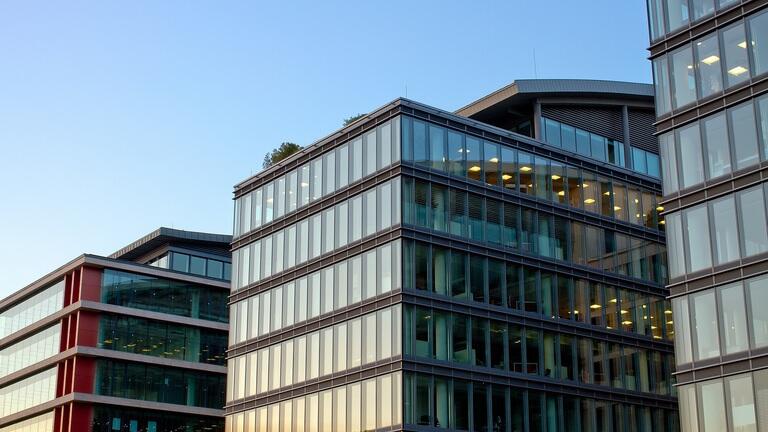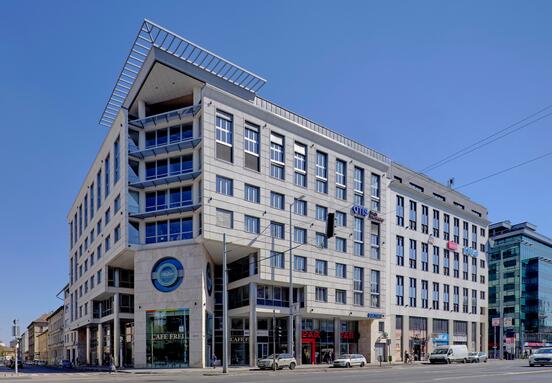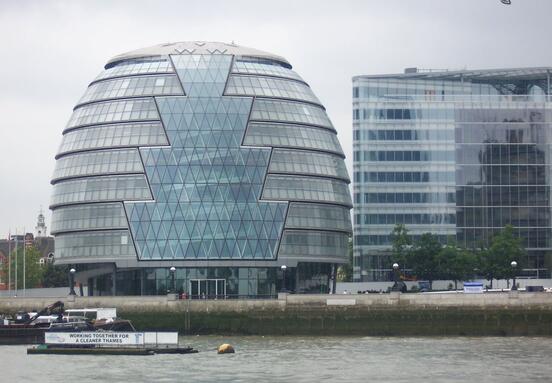Handovers
In 2019 70.5 thousand square metres’ new offices appeared in the market, which is significantly smaller than the previous year’s quantity (230.5 thousand square meters). The temporary setback of handovers can be explained by soaring construction costs;
according to forecasts an increase by more than 200 thousand square metres in supply can be expected in 2020.
In 2019 the office corridor in Váci street and central Pest region were the most important elements of developers’ activity, around three quarters of the new offices were realised here (27 and 24 thousand square metres per submarket). The biggest expansion in 2019 could be seen in Futureal’s Corvin Technology & Science Park; here two buildings were completed (Corvin Technology & Science Park I and II, 23.7 thousand square metres altogether).
Developments
About 570 thousand square metres’ new offices were being implemented at the end of the year, half of which (226 thousand square metres) could be completed until the end of 2020 (13 buildings). Investors’ activity will be the strongest on Váci Street in the next 12 months, where more than 125 thousand square meters new offices will be realised in five buildings. As a result the stock of Budapest’s dominant submarket will be bigger than one million square metres in 2020. The second biggest stock expansion can be expected in the
south Buda region until the end of 2020 (50 thousand square metres), furthermore non-central Pest market is also expected to strengthen in 2020-2021.
Rental fees, yields
The dynamic growth of rental fees continued in 2019, which can be explained by the shortage of available areas, the increasing construction costs and the lack of building capacity. Rising rental fees could be observed in the central-eastern region (CEE) as well. The average fee interval for A category properties in Budapest is 14.5-16.5 EUR/m². Investors’ yield expectation is between 5.8-6%, while for premium properties it is under 5%.
Demand
In 2019 office market demand was record high. The volume of leases was 637 thousand square metres, which overtakes the previous record –in 2015 – by almost one hundred thousand square metres. The volume of prelease agreements set a new record too (128 thousand square meters), its ratio within the demand is significant as well (20%). In addition, the rate of net demand was 57% (new lease, pre-lease and expansions), which is a 15% decrease in comparison with last year’s figure. 672 office rental agreements were registered during the year, nine out of these were for areas bigger than 10 thousand square meters. Two of the agreements for more than 25 thousand square meters were contract renewals, and one of them was the most valuable prelease agreement of all times
(27,333 square metres, ExxonMobil in GTC Pillar office building). The average size of office rentals grew from 785 square metres last year to 950 square metres.
Vacancy
Market absorption decreased in 2019 in comparison with the year before (128 thousand square metres), nevertheless office market vacancy reached a record low level. At the end of 2019 only 5.6% of the offices was vacant (208 thousand square metres). Market absorption of the biggest extent could be seen in the Pest Central submarket, where the volume of rented areas grew by 45 thousand square metres. Similarly to the end of the year the lowest vacancy rate can be measured in the Non Central Pest submarket, where 1.4% of modern office stock was vacant. According to registered data, at the end of 2019 there was no office building in this submarket with an area of more than 1500 square metres vacant.
Forecast
In 2020 the office market stock in Budapest is expected to grow significantly; according to preliminary announcements handovers will surpass 225 thousand square metres. Váci Street region and South Buda submarket will remain in the centre of investments, in 2021 significant developments further from the centre in the Pest side can be expected. In the market of development plots stronger demand can be seen in the southern part of Könyves Kálmán Ringroad, this area can become a new focus of interest in the next couple of years. The increase of rental fees and the decrease of office market yields –with moderate intensity – are expected to continue in 2020. Property investors’ activity will probably not decrease, but international investors’ market share of the transactional volume will probably grow. It is likely that the number of prelease agreements will rise significantly since supply is insufficient and for new entrants this is the only possibility left
Eston








